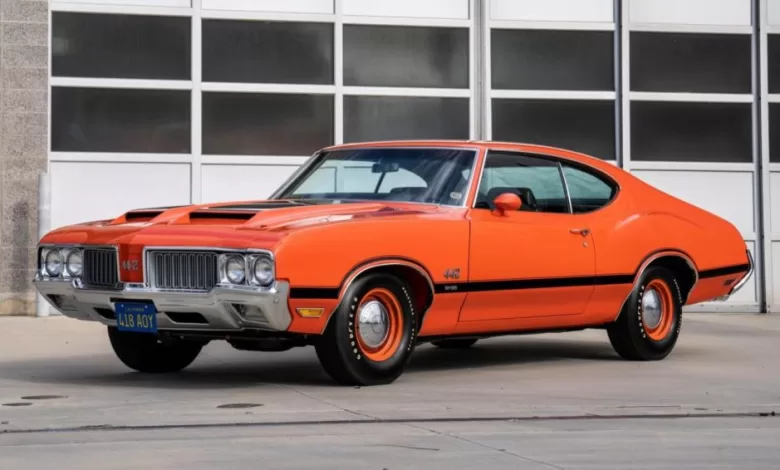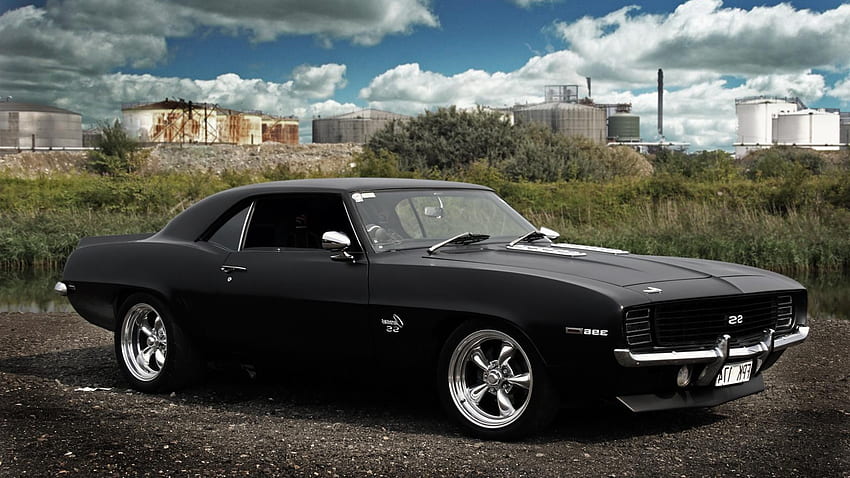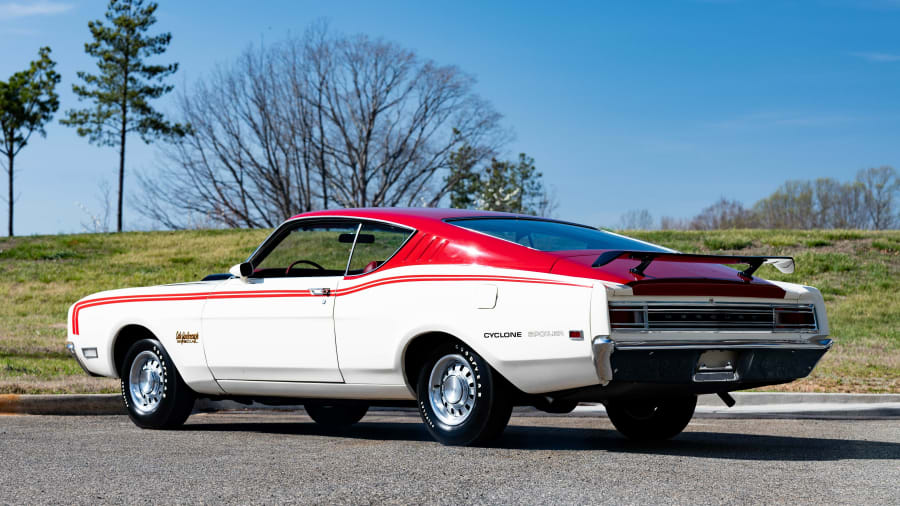Classic Muscle Cars History, Models, and More

Introduction to Classic Muscle Cars
In the realm of automotive history, classic muscle cars hold a special place, evoking nostalgia, power, and timeless allure. These iconic vehicles, primarily produced in the 1960s and 1970s, embody the essence of American automotive prowess and have captured the imagination of car enthusiasts around the world. With their thunderous engines, sleek designs, and raw performance, classic muscle cars continue to inspire awe and admiration.
In this comprehensive guide, we delve into the fascinating world of classic muscle cars, exploring their history, iconic models, unique features, maintenance tips, restoration processes, and more. Get ready to embark on a thrilling journey down memory lane as we celebrate these automotive legends.
History of Classic Muscle Cars
The origins of classic muscle cars can be traced back to the post-World War II era in the United States. During this period, there was a growing demand for powerful and stylish vehicles that could deliver exhilarating driving experiences. This demand was fueled by a combination of factors, including the rising affluence of the American middle class, the popularity of drag racing, and the influence of Hollywood car chase scenes. In response to this demand, American automakers began to produce vehicles that were not only aesthetically pleasing but also packed with powerful engines and impressive performance capabilities.
The Golden Age of Muscle Cars (1964-1972)
The golden age of muscle cars is generally considered to have spanned from 1964 to 1972. During this period, American automakers unleashed a torrent of high-performance vehicles that pushed the boundaries of automotive engineering. These muscle cars were characterized by their large displacement V8 engines, rear-wheel drive, and aggressive styling. Some of the most iconic muscle cars from this era include the Ford Mustang, Chevrolet Camaro, Pontiac GTO, Plymouth Barracuda, and Dodge Challenger.
The Decline of Muscle Cars
The golden age of muscle cars came to an abrupt end in the early 1970s due to several factors. The rising cost of fuel, stricter emission regulations, and the insurance crisis all contributed to the decline of these powerful vehicles. Additionally, the introduction of smaller, more fuel-efficient vehicles further eroded the popularity of muscle cars. As a result, production of many classic muscle cars ceased, and the era of these automotive icons drew to a close.
Classic Car Prices How to Find the Best Deals
Top 10 Cheap Muscle Cars to Rev Up Your Engine
Top 10 Classic Muscle Cars
When it comes to classic muscle cars, there are certain models that stand out as true legends. These vehicles are renowned for their exceptional performance, iconic designs, and lasting impact on automotive history. Here we present a list of the top 10 classic muscle cars that have captured the hearts of enthusiasts worldwide:
1. Ford Mustang Shelby GT500
- Year: 1967
- Engine: 428 cubic inch V8
- Horsepower: 355 hp
- Top Speed: 130 mph
- Why It’s Iconic: The Shelby GT500 is the quintessential muscle car, combining raw power and sleek design. It was Carroll Shelby’s ultimate creation, and its legacy lives on today.
2. Chevrolet Camaro Z28
- Year: 1969
- Engine: 302 cubic inch V8
- Horsepower: 290 hp
- Top Speed: 120 mph
- Why It’s Iconic: The Camaro Z28 was the direct competitor to the Mustang, and it quickly gained a reputation for its aggressive styling and impressive performance.
3. Pontiac GTO “The Judge”
- Year: 1969
- Engine: 400 cubic inch V8
- Horsepower: 370 hp
- Top Speed: 120 mph
- Why It’s Iconic: The GTO “The Judge” was a special edition model that took the muscle car formula to new heights. Its bold graphics and powerful engine made it an instant classic.
4. Plymouth Barracuda
- Year: 1970
- Engine: 426 cubic inch V8
- Horsepower: 425 hp
- Top Speed: 135 mph
- Why It’s Iconic: The Plymouth Barracuda was a sleek and stylish muscle car that offered blistering performance. Its distinctive fastback design made it a standout on the streets.
5. Dodge Challenger R/T
- Year: 1970
- Engine: 426 cubic inch V8
- Horsepower: 425 hp
- Top Speed: 135 mph
- Why It’s Iconic: The Dodge Challenger R/T was a muscle car that exuded power and attitude. Its aggressive styling and potent engine made it a true force to be reckoned with.
6. AMC Rebel Machine
- Year: 1970
- Engine: 390 cubic inch V8
- Horsepower: 340 hp
- Top Speed: 120 mph
- Why It’s Iconic: The AMC Rebel Machine was a unique muscle car that offered a combination of style, performance, and affordability. Its distinctive grille and quad headlights set it apart from the crowd.
7. Oldsmobile 442
- Year: 1970
- Engine: 455 cubic inch V8
- Horsepower: 365 hp
- Top Speed: 120 mph
- Why It’s Iconic: The Oldsmobile 442 was a muscle car that combined luxury and performance. Its spacious interior and powerful engine made it a favorite among enthusiasts who wanted both style and speed.
8. Chevrolet Chevelle SS
- Year: 1970
- Engine: 454 cubic inch V8
- Horsepower: 450 hp
- Top Speed: 120 mph
- Why It’s Iconic: The Chevrolet Chevelle SS was a muscle car that represented the epitome of power and performance. Its massive engine and aggressive styling made it a true legend on the streets.
9. Mercury Cyclone Spoiler II
- Year: 1970
- Engine: 429 cubic inch V8
- Horsepower: 375 hp
- Top Speed: 120 mph
- Why It’s Iconic: The Mercury Cyclone Spoiler II was a muscle car that was built for speed. Its aerodynamic design and powerful engine made it a formidable opponent on the drag strip.
10. Plymouth Road Runner
- Year: 1970
- Engine: 426 cubic inch V8
- Horsepower: 425 hp
- Top Speed: 135 mph
- Why It’s Iconic: The Plymouth Road Runner was a no-frills muscle car that focused on pure performance. Its lightweight body and massive engine made it a force to be reckoned with on the streets.
Features of Classic Muscle Cars
Classic muscle cars are known for their distinctive features that set them apart from other vehicles. These features not only make them visually appealing but also contribute to their impressive performance capabilities. Some of the most notable features of classic muscle cars include:
- Large displacement V8 engines: Classic muscle cars are renowned for their powerful engines, typically ranging from 350 to 500 cubic inches in size. These large displacement V8 engines produce high levels of horsepower and torque, allowing these vehicles to accelerate quickly and reach high speeds.
- Rear-wheel drive: Most classic muscle cars feature rear-wheel drive, which provides better traction and handling, especially during high-speed driving.
- Aggressive styling: From bold stripes and decals to hood scoops and spoilers, classic muscle cars are designed to look fast and powerful. Their sleek and aggressive designs continue to inspire car enthusiasts to this day.
- Manual transmissions: Many classic muscle cars were equipped with manual transmissions, giving drivers more control over their vehicle’s performance.
- High-performance suspension: To handle the power of their engines, classic muscle cars often featured upgraded suspension systems that provided better handling and stability.
- Limited-slip differentials: These differentials helped improve traction and prevent wheel spin, making it easier for drivers to launch their muscle cars off the line.
- Dual exhausts: Classic muscle cars are known for their deep, rumbling exhaust notes, thanks to their dual exhaust systems. This feature not only adds to the overall aesthetic of these vehicles but also improves engine performance.
Maintenance Tips for Classic Muscle Cars
Owning a classic muscle car comes with its own set of unique challenges, especially when it comes to maintenance. These vehicles require special care and attention to keep them running smoothly and looking their best. Here are some essential maintenance tips for classic muscle cars:
- Regular oil changes: It’s important to change the oil in your muscle car every 3,000 miles or every three months, whichever comes first. This will help keep your engine running smoothly and prevent any potential issues.
- Check and replace fluids: In addition to oil, it’s crucial to regularly check and replace other fluids such as coolant, brake fluid, and transmission fluid. These fluids play a vital role in keeping your muscle car running at its best.
- Keep an eye on tire pressure: Proper tire pressure is essential for optimal handling and performance. Make sure to check your tire pressure regularly and adjust it as needed.
- Inspect brakes and suspension: The brakes and suspension are critical components of any vehicle, and it’s especially important to keep them in top condition for a muscle car. Regularly inspect these systems and replace any worn or damaged parts.
- Protect against rust: Classic muscle cars are prone to rust, so it’s crucial to take steps to prevent it. Regularly wash and wax your vehicle, and store it in a dry, climate-controlled environment if possible.
- Follow manufacturer’s recommendations: Every classic muscle car is unique, and it’s essential to follow the manufacturer’s recommended maintenance schedule for your specific vehicle. This will help ensure that your muscle car stays in top condition for years to come.
Restoration Process for Classic Muscle Cars
Restoring a classic muscle car can be a labor of love, but it’s also a highly rewarding experience. Whether you’re bringing an old muscle car back to its former glory or customizing it to your liking, the restoration process typically involves several key steps:
- Planning and research: Before starting any restoration project, it’s essential to have a clear plan in place. This includes determining the scope of the project, setting a budget, and researching the specific model of your muscle car.
- Disassembly: The first step in the physical restoration process is to disassemble the vehicle. This involves removing all parts and components from the body and frame.
- Bodywork: Once the vehicle is stripped down, it’s time to address any rust, dents, or other damage to the body. This may involve replacing panels, repairing dents, and sanding down the body to prepare it for paint.
- Paint and finish: After the bodywork is complete, the vehicle is ready for paint. This is a crucial step that requires precision and attention to detail to achieve a flawless finish.
- Engine and drivetrain: While the body is being worked on, the engine and drivetrain can be rebuilt or upgraded. This may involve replacing worn or damaged parts, upgrading to high-performance components, or rebuilding the engine entirely.
- Reassembly: Once all the individual components are restored, they can be reassembled onto the body and frame.
- Final touches: The final step in the restoration process is to add any finishing touches, such as decals, emblems, and trim pieces.
Comparison of Classic Muscle Cars
With so many iconic models to choose from, it can be challenging to determine which classic muscle car is the best. Each vehicle has its own unique features and performance capabilities, making it difficult to compare them directly. However, here are some factors to consider when comparing classic muscle cars:
- Power and performance: One of the main draws of muscle cars is their impressive power and performance. When comparing vehicles, look at factors such as horsepower, torque, and top speed to get an idea of their capabilities.
- Styling: Classic muscle cars are known for their eye-catching designs, so aesthetics play a significant role in the comparison process. Consider factors such as body style, color options, and unique features when comparing different models.
- Rarity and value: Some classic muscle cars are rarer than others, making them more valuable to collectors. If rarity is important to you, research how many of each model were produced and how many are still in existence.
- Personal preference: Ultimately, the best classic muscle car is the one that speaks to you personally. Each vehicle has its own distinct character and appeal, so it’s essential to choose one that resonates with you.
Famous Owners of Classic Muscle Cars
Over the years, many famous individuals have owned and driven classic muscle cars, further cementing their status as automotive icons. From actors and musicians to athletes and politicians, here are just a few notable owners of classic muscle cars:
- Steve McQueen: The “King of Cool” was known for his love of fast cars, including a 1968 Ford Mustang GT from the movie Bullitt.
- Jay Leno: The famous comedian and TV host is a well-known car enthusiast, with a collection that includes several classic muscle cars such as a 1969 Lamborghini Miura S and a 1970 Dodge Challenger R/T.
- Elvis Presley: The King of Rock and Roll owned several classic muscle cars, including a 1955 Cadillac Fleetwood and a 1973 Stutz Blackhawk.
- Burt Reynolds: The late actor was a fan of muscle cars and famously drove a 1977 Pontiac Firebird Trans Am in the movie Smokey and the Bandit.
- Arnold Schwarzenegger: The former bodybuilder and actor is a well-known collector of classic muscle cars, with a collection that includes a 1965 Chevrolet Corvette and a 1970 Plymouth Barracuda.
Future of Classic Muscle Cars
Despite the decline of classic muscle cars in the 1970s, these vehicles continue to hold a special place in the hearts of car enthusiasts worldwide. In recent years, there has been a resurgence of interest in classic muscle cars, with many younger generations discovering and appreciating these iconic vehicles. As a result, the value of classic muscle cars has been steadily increasing, making them a sound investment for collectors.
Additionally, advancements in technology and engineering have made it possible to restore and modify classic muscle cars with modern components, further increasing their appeal to a wider audience. With this combination of nostalgia, innovation, and enduring popularity, it’s safe to say that classic muscle cars will continue to be a timeless symbol of American automotive history for generations to come.
Conclusion: Why Classic Muscle Cars are Timeless
In conclusion, classic muscle cars are more than just vehicles; they are symbols of an era, a culture, and a way of life. These powerful and stylish vehicles have captured the hearts of car enthusiasts for decades and continue to inspire awe and admiration to this day. From their rich history and iconic models to their unique features and enduring appeal, classic muscle cars are truly timeless. Whether you’re a die-hard fan or just discovering these automotive legends, there’s no denying the lasting impact and significance of classic muscle cars in the world of automobiles.




















